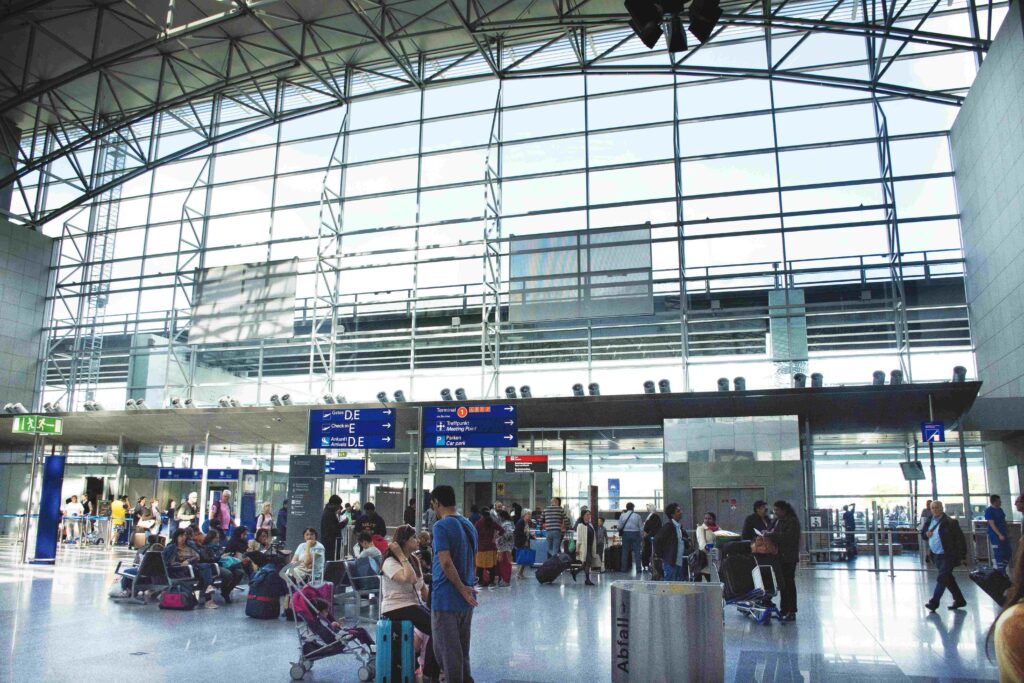Airports Lead in Energy Efficiency & Sustainability
Case Study

Airports across the country are increasing the outreach towards reducing the carbon footprint, with increasing awareness to replace regular operations with sustainability, recycling waste and working towards helping the environment. These moves are in step with the Airport Authority of India’s (AAI) goal to achieve Net Zero by 2030. Speaking at a high level DigiFM Conference at the Clean India Show, Amit Jain, Association General Manager, Engineering & Maintenance at Navi Mumbai International Airport (NMIA) and Bharti Singh Kalappa, Facilities Head at Noida International Airport (NIA) discussed on Technology-enabled Sustainability and Energy Efficiency initiative taken by their respective airports.
Mumbai and Delhi airports have received the highest level of 4+ carbon accreditation from the Airports Council International (ACI) for their focused decisions to become green airports. Cochin Airport, with the distinction of operating fully on solar energy, has also won the Champions of the Earth award from the United Nations.

It is in the interest of professionals to bring about change. As far as airports are concerned, without tech-enabled devices, we cannot exist because a secured environment is crucial for the safety of passengers.”
– Bharti Kalappa
Solar Energy and Sustainable Design
Solar energy has been a key focus at both Navi Mumbai and Noida airports. Both speakers mentioned the importance of integrating sustainable design decisions right from the outset. Bharti explained, “It starts with the design phase. We work hand-in-hand with the design team, discussing every single detail. Even something as simple as choosing the right stone, we check its reflection ratio. When selecting lighting, we ensure it aligns with energy management principles.” She went on to mention that technology plays an equally important role, starting from recruitment. “For instance, we use AI-enabled technology to streamline recruitment, saving valuable time. By digitizing these processes, we also reduce paper consumption, which is a part of our commitment to sustainability.”
Both airports have seen the evolution of technology, from halogen bulbs to CFLs and now to LED lights, leading to energy savings that can be used elsewhere. Amit Jain elaborated, “For instance, our airport runway halogen lights have been replaced with LEDs. Each light consumes 30-35 watts, and we’ve replaced about 700 to 800 lights. That’s a huge saving.”
Sustainable aviation fuel (SAF) adoption is another area where both airports are focusing efforts, even though it comes at a higher cost. Bharti added, “For a domestic flight, jet fuel consumption is around 5,000 to 6,000 litres. We’re also reducing paper usage by adopting WIM modelling. And we’re seeing the rise of biogas plants at our facilities, which helps reduce waste. All water generated from F&B is being reused as part of our goal to achieve Zero Waste by 2030.”

“If your infrastructure is not supporting your plans or initiatives, it becomes difficult to implement them. Data collection is one area that is currently lacking.”
– Amit Jain
Sustainability and Carbon Neutrality Efforts
The efforts of NMIA and NIA are fully aligned with the Ministry of Civil Aviation’s initiatives to promote carbon neutrality across airports in India. The implementation of solar panels, either under net metering or captive modes, alongside the adoption of self-consumption of solar and renewable energy, is happening at a significant scale. More than 100 Indian airports have adopted 100% green energy procedures.
“Solar energy is by far the most effective solution,” said Bharti. “The cost of installing solar panels has decreased over the years and is now subsidized, which makes it much more accessible compared to earlier. For airports, solar power works best since it provides a continuous supply of energy, especially in remote areas where electricity can be hard to come by.”
Cochin International Airport Limited (CIAL) was one of the early adopters of solar energy, starting in 2013. Just two years later, they scaled up to 13.11MW of power generation and are now fully operational on solar energy. According to CIAL, their green energy generation has reached 25 crore units, with 75 lakh units coming from their hydro power project.
To further support sustainability, CIAL has also installed two fast-charging stations for electric vehicles at both the domestic and international terminals.
Lifecycle Approach to Sustainability
Discussing the lifecycle of airport infrastructure, Amit Jain shared insights: “When it comes to sustainability, we have to look at the entire lifecycle. For a 30-year building lifecycle, the Capex cost comes down to just 2%. The bigger picture is the operating costs, which account for about 98%. So, even if a building is not 100% energy-efficient, the decision to use solar lights, hydrogen, and electric vehicles should be weighed carefully, as they can help bring down operational costs significantly in the long run.”
Amit also mentioned that at airports, engineering and maintenance costs can account for up to 30-35% of the entire operational budget, making it important to consider sustainability from an operational standpoint for long-term benefits.
Tech-enabled Sustainability and Energy Efficiency Solutions
Some of the noteworthy tech-enabled sustainability and energy-efficient solutions include:
• Cutting down on thermal energy usage by switching to solar in the facility management industry
• Replacing paper-based records with tablets, significantly reducing paper use
• Using digital dashboards to minimize in-house paper usage
• Maintaining e-checklists and QR-code-based processes for facility management
• Real-time digital monitoring of energy consumption — water, electricity, and gas — to earn carbon credits
• Implementing SCADA systems for energy management to monitor lighting and reduce CO2 emissions
 CIJConnect Bot-enabled WhatsApp
CIJConnect Bot-enabled WhatsApp









